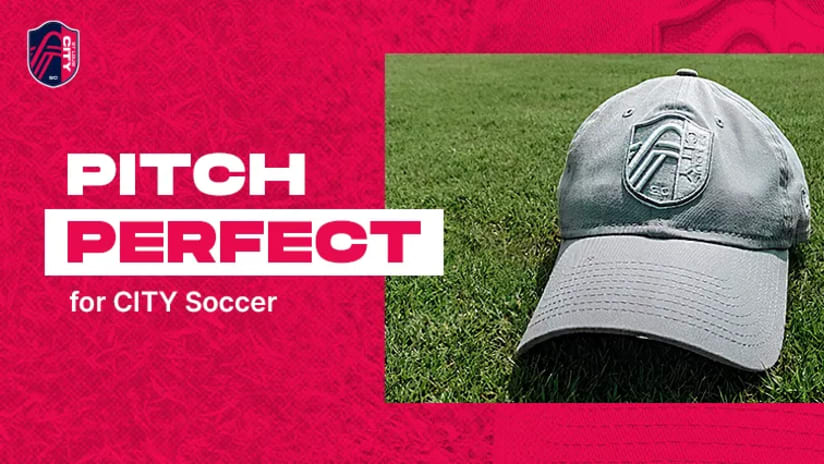Written by Kristen Carver
The game of soccer gets faster, more technical, and more advanced every year. The same goes for the surface it’s played on.
“I look back at the fields I was managing 20 years ago, and they’re nowhere near the quality that we’re doing now, and that’s across the whole board,” Director of Stadium Grounds Josh McPherson said. “And so technology, between the root-zone heating, the lighting, the testing, it just keeps getting better and better all the time.”
Before we even think about technology, let’s talk about what McPherson calls the most important thing when building a pitch — drainage. Even with synthetic fields, drainage is critical for long-term success. McPherson and his crew had 10 different sand blends — made to evaluate the root zones where the fields will grow — tested as a way to find the proper amount of drainage.
“The sand itself, without the grass, I think can hold 22 inches an hour, but it’s also strong enough that it can hold the grass in place. Because what you don’t want is that ‘ice rink’ effect where someone goes into a slide tackle, and then you see the giant piece of sod come out. So it’s this careful balance of drainage and stability.”
After the sand blend, comes the sod. You can’t see it in Downtown West just yet, but the NorthBride Bermuda grass has been growing for quite some time in North Carolina through the Carolina Green Corporation.
“This is really exciting for me because when I first started at Virginia Tech, we had just built a brand-new soccer stadium and sodded the pitch with this company and met the owner of Carolina Green. The first soccer pitch I ever maintained on my own was a Carolina Green soccer pitch. Now it’s kind of full circle here. I am coming up to the highest level and we’re getting our sod from the exact same place.”
So how will the grass get here? Refrigerated semi-trucks — about 30 for the stadium pitch and 20 some per practice field pitch. Yes, the grass may be growing 600 miles away, but parts of this operation are being sourced locally.
“The root-zone sand that’s going to help make up our root zone and the stone that makes up the drainage layer for these fields are being dredged here locally, straight out of the Missouri River, within a half-hour of Downtown St. Louis. It is Missouri sand and stone that are making up this pitch. It’s very exciting.”
What’s also exciting is the incredible technology being used at Centene Stadium. Stadium overhangs and the close proximity of seats at professional soccer stadiums tend to cause shade issues. Centene Stadium’s pitch actually has less shade than most, but the grounds crew is growing grass in some areas where there is zero sunlight, especially during the colder months from October to March. That’s when the grow lights come in handy.
“These grow lights are massive lights that cover the pitch itself. It’s a big operation to get them out, but we’ll have different ways we can track how much sunlight we’re getting on the pitch. And we’ll be able to deploy these lights, how much light, where we’re trying to mimic mother nature, we’re trying to mimic the sunrise. So, the parts of our pitch that are getting sun, we’ll be able to try to match that with the lights themselves.
Heating elements will also be installed underneath the grass root zone because, in those shaded areas on the pitch, it will get colder. Above the pitch, row covers will then retain the heat while keeping the frost off the grass. McPherson explained that when Bermuda grass gets frosted, it begins to turn brown. If you see fields around Missouri that look brown, the grass is probably not dead but instead dormant and hanging out until the temperatures are right to start growing again. Through these different covers, lights, and heat, the grounds crew is able to create the best growing environment for the grass. On top of all of that, nutrients will be provided to supplement what’s being lost through growing in the shade versus in the light.
“We can actively grow grass when everyone else’s home lawn is not doing anything, and we’re still playing. We’ll be able to try to produce situations where we’re still growing grass.”
By extending the growing season, McPherson will be able to create what he prefers to produce for a soccer pitch: a fast and firm surface. A philosophy that perfectly mirrors the coaching style of Head Coach Bradley Carnell and Sporting Director Lutz Pfannenstiel.
“Having a guy like Josh who is so passionate about grass and player safety is such a huge benefit for our club,” Pfannenstiel said. “In modern football, the quality of the pitch has such a significant impact on how a team plays — with something as basic as the length of the grass possibly providing an advantage to one team based on their philosophy. Thankfully, we have Josh, who not only brings a ton of experience and expertise but also understands how to maintain a playing surface that suits the way we want to play.”


